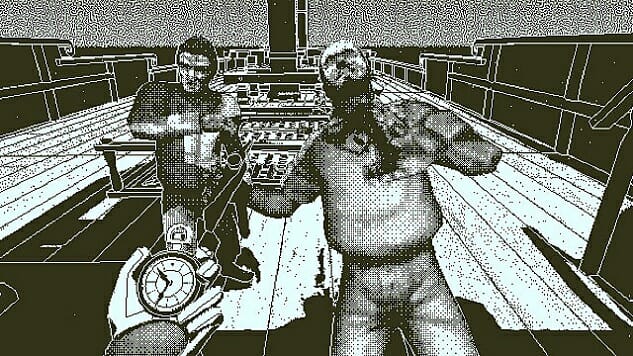If I had to describe Return of the Obra Dinn in a single word, that word would be… “delicious.” It’s one of those wonderful, rare games that excels on all levels, from mechanics and premise to art and narrative. Playing it has been a breath of fresh air.
But for all of its strengths, the best part is the difficulty. At the heart of it all is a brand of deductive reasoning that combines the mystery of Clue and the sleuthing of a Carmen San Diego game. Set aboard the seemingly abandoned Obra Dinn, the player must use obscure notes from their personal log, their environment and and contextual hints to piece together what happened aboard the now-empty ship and its 51 passengers.
There are plenty of games out there, mostly point and clicks, that ask the player to solve a major mystery by piecing together clues from the environment. But few provide such a challenge. Return of the Obra Dinn reminds me of geometry, with all its theorems and proofs, where the goal is to figure out the relationship between all the figures and elements of the equation until a conclusion can be drawn. Often it requires holding several pieces of partial information in suspension, following the trail of thought until even just one tiny, solid sliver of detail unlocks a key to the whole cypher. The tension is addicting, each victory a triumph no matter how small.
Return of the Obra Dinn achieves this by making each character’s fate—all 51 of them—their own unique crime scene. As an insurance investigator looking into the strange reappearance of the missing trade ship, the player walks through the deaths and disappearances of everyone onboard, visiting their bodies and using a magic pocket watch to “rewind time” and briefly view the circumstances of their demise. How did each person die, and who were they? Finding out will require using what few resources are available to deduce the connection between various crew members and passengers by reverse engineering and process of elimination, checking the logs to see who was on the ship, what their titles were, and what was said in the moments leading to their end. It’s like a game of murder sudoku, with a stylish, almost swashbuckling, flair.
A good puzzle game, like chess, feels like a deep brain flex, or doing cerebral lunges. Whenever I play sudoku regularly, for example, I notice the cognitive fog that I often get as a side effect of my chronic health problems kind of goes away. Return of the Obra Dinn is such a satisfying and well balanced detective experience, evoking the same glee I used to feel every time my high school geometry teacher plopped down a batch of proofs in front of me. It is the best math problem I have ever played.
Holly Green is the assistant editor of Paste
Games and a reporter and semiprofessional photographer. She is also the author of Fry Scores: An Unofficial Guide To Video Game Grub.
You can find her work at Gamasutra, Polygon, Unwinnable,
and other videogame news publications.